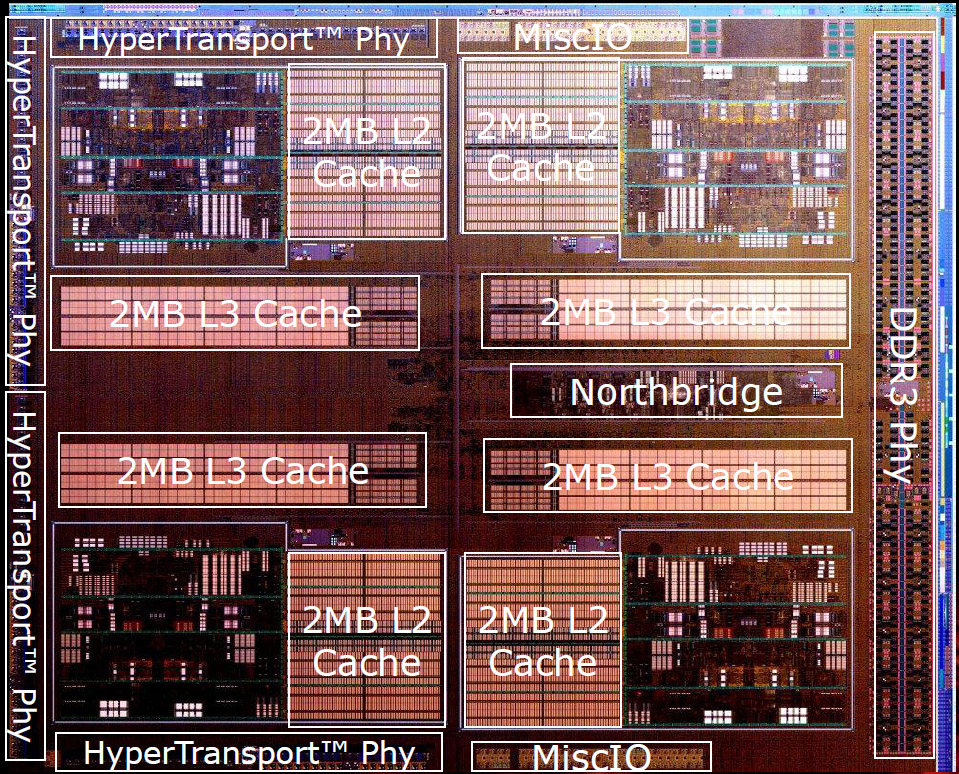AMD Bulldozer Review: FX-8150 Gets Tested
Perhaps the most hotly-anticipated launch in 2011, AMD’s FX processor line-up is finally ready for prime time. Does the company’s new Bulldozer architecture have what it takes to face Intel’s Sandy Bridge and usher in a new era of competition?
AMD FX-8150: The Bottom Line
So, let’s say someone puts Core i5-2500K and FX-8150 in front of you. The Core i5 costs $220 bucks, and the FX runs $245. Which one do you buy?
If it’s me, I’m going with the Core i5. I gave the -2500K a Tom’s Hardware Recommended Buy award back in January, and I stick by that recommendation almost a year later.
In the very best-case scenario, when you can throw a ton of work at the FX and fully utilize its eight integer cores, it generally falls in between Core i5-2500K and Core i7-2600K—which is where it should appear all of the time given a price tag between those two most relevant competitors. Sometimes FX manages to outperform the higher-end -2600K, but other times it’s embarrassingly bested by its predecessor in threaded workloads.
Toss a single-threaded app at the processor, though, and it underperforms Intel's three-year-old Core i7-920 running at its stock 2.66 GHz. AMD’s architects say they shot to maintain IPC and ramp up clock rate, but something clearly went wrong along the way.
Ironically, consistent, scalable performance is one of the attributes that AMD claims it gets from its Bulldozer module. The issue we see over and over, though, is that it relies on software able to exploit scalability in order to compete. When it doesn’t get what it wants, performance steps back relative to the previous generation. As a result, even though AMD implements a more advanced version of Turbo Core to help improve single-threaded performance, the difference between what you get in lightly- and heavily-threaded applications is anything but consistent.
AMD validly points out that Bulldozer is an architecture in its infancy accompanied by an aggressive roadmap. It incorporates future-looking ISA enhancements and a layout clearly conceptualized with threaded software in mind. Performance in the applications able to take advantage of those considerations is fair in light of AMD's asking price. But the compromises made elsewhere don't justify $245, in my opinion.
Is Bulldozer A Good Foundation?
Get Tom's Hardware's best news and in-depth reviews, straight to your inbox.
AMD projects 10 to 15 percent performance gains per year for the next several years. Just as important as what the company does architecturally, though, will be how software continues to evolve. Given its modularity, expect the engineering team behind Bulldozer to ramp up performance through a combination of more frequency, critical improvements to IPC, and optimizations to power.
We’ve seen how well-threaded workloads let FX-8150 step right up to Sandy Bridge, and we’ve seen how the processor falls on its face in apps that clearly weren’t written for the “go wide” approach to procuring performance. Piledriver, expected next year, should derive at least some of its advantage from IPC-oriented fixes. Consider those absolutely critical to even out this architecture's idiosyncrasies.
But by the time it emerges for the enthusiast market, AMD will probably have to contend with Ivy Bridge, armed with advancements of its own. This isn’t a good thing. I want to see competition—a battle that keeps both Intel and AMD innovating. Does today’s FX invoke the Athlon 64 FX-51 that compelled Intel to rebadge a Xeon and come up with the Extreme Edition moniker back in 2003 just to compete? Not really, no. In fact, the chip giant didn’t have to do anything at all. Its nearly year-old 95 W parts fend for themselves without even a price adjustment.
Although I’m counting on Valencia and Interlagos to fare better against Xeon in the server space, where threaded workloads are the rule, it’s disappointing to see Zambezi suck down the power of Intel’s highest-end processors under load, perform like its competitor’s year-old mainstream chips, and wear the branding of a family that, eight years ago, actually made Intel squirm.
Follow Chris Angelini on Twitter
For a chance at winning your own FX-8150-based Gamer Ultra FTW PC, please click this link to enter our CyberPower PC/Tom's Hardware contest. The system's specs are as follows:
- AMD FX-8150 CPU (3.6 GHz)
- AMD Radeon HD 6970 2 GB Graphics Card
- MSI 990FXA-GD80 990FX-Based Motherboard (Socket AM3+)
- Thermaltake Level 10GT Full Tower Gaming Case
- Thermaltake Toughpower Grand TPG-850M Gold Modular 80 PLUS Power Supply
- Thermaltake Frio OCK Dual-Tower Heat Sink
- Patriot 120 GB Wildfire SSD (SandForce SF2200-Based)
- Patriot Gamer 2-Series 8 GB DDR3-1600 Extreme Performance Memory
- 12x Blu-ray Player and DVD-RW Combo Drive
- XtremeGear Optical Gaming Keyboard and Mouse
- Microsoft Windows 7 Home Premium (64-bit Edition)
Contest is limited to residents of the USA (excluding Rhode Island) 18 years of age and older. Contest starts on October 11, 2011 9:00 PM, Pacific Standard Time and closes on October 25, 2011 11:59 PM, Pacific Standard Time.
Results will be announced by October 31, 2011.
The information you provide will only be used to contact you in relation to this contest.
YOU MAY SUBMIT ONLY ONE ENTRY. MULTIPLE ENTRIES FROM THE SAME PERSON WILL ALL BE DISCARDED.
Current page: AMD FX-8150: The Bottom Line
Prev Page Sneak Peek: AMD’s Bulldozer Architecture On Windows 8

